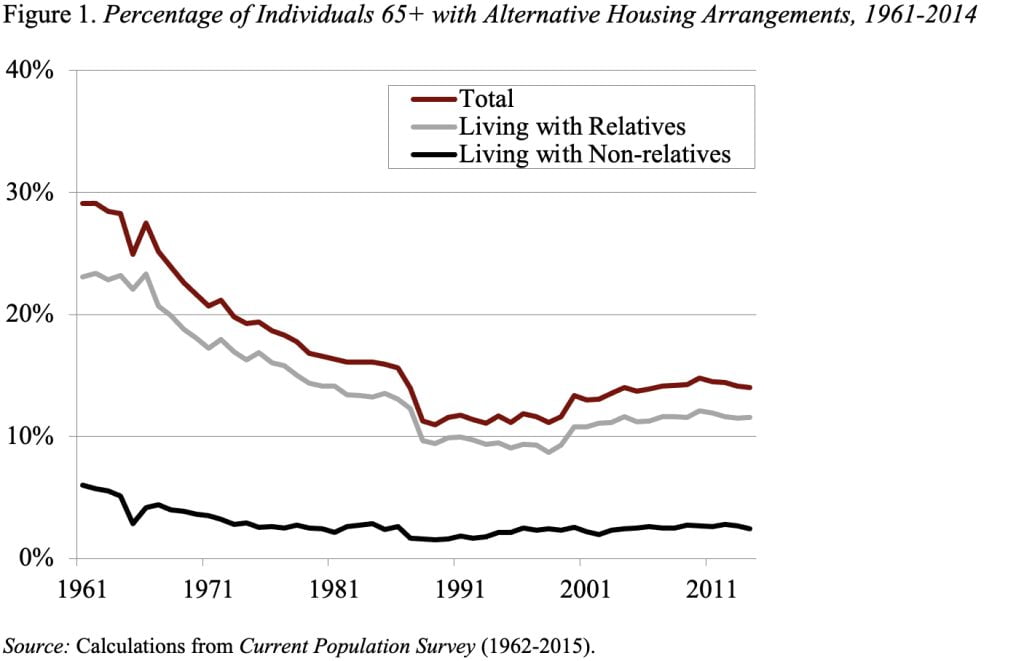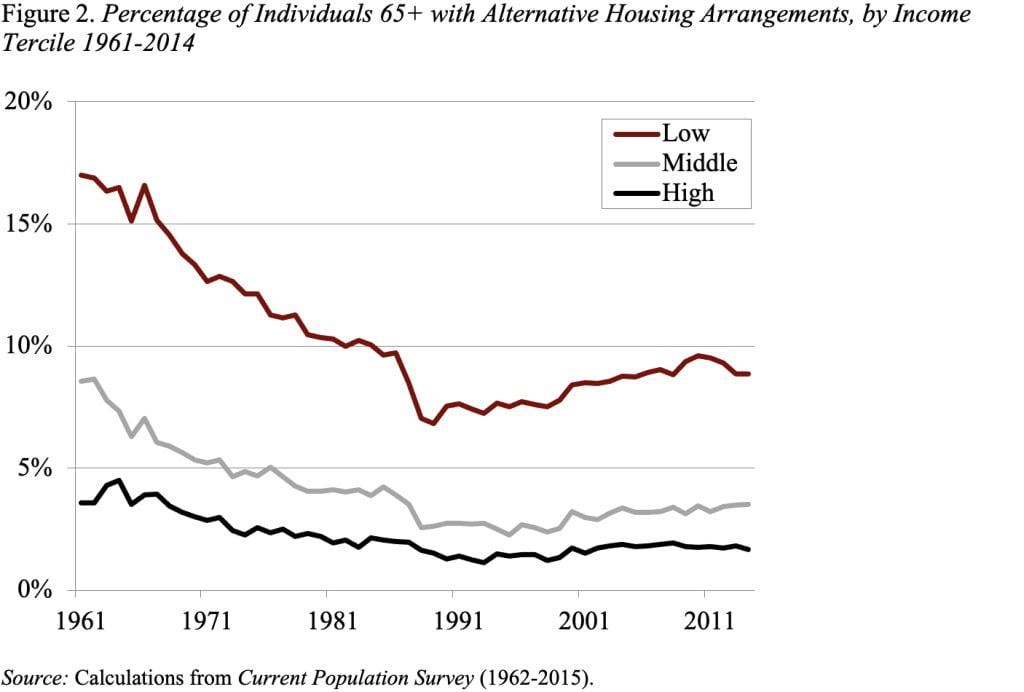
Major Reversal in Living Patterns among Those 65 and Older
Alicia H. Munnell is a columnist for MarketWatch and senior advisor of the Center for Retirement Research at Boston College.
Reversal is driven by low-income individuals.
A reporter asked us recently about trends in living arrangements among older Americans. The question stemmed from the notion that house-rich, cash-poor households might be taking in lodgers to cover their expenses in retirement. While that hypothesis did not pan out, the data are quite interesting. Living arrangements have been changing.
The percentage of individuals 65 and over living with relatives or non-relatives declined from 1961 to 1990 and then held steady for a decade before beginning to climb around the turn of the century (see Figure 1). The reason that the reporter’s hypothesis didn’t hold is that the increase appears to be for those living with relatives rather than non-relatives. It is not clear whether older people are moving in with the young or vice versa, but we are now back to levels not seen since the 1980s.

It’s interesting to look at the phenomenon by income level. (Income is based on the household income of those 65 and over, even though the percentages are calculated in terms of individuals.) As expected, much more doubling up occurs at the lower end of the income scale than at the upper end. But what was not expected is that virtually all of the increase since the turn of the century in the percentage of older people living with someone other than a spouse has occurred among those in the lowest income category (see Figure 2).

The lowest income group showed the sharpest decline between 1961 and 1990, suggesting a strong preference among those 65 and over to live on their own. The increase since 1990 must be driven by economic necessity. The question is whether it is the economic necessity of retirees or of their children that has led to the reversal in living arrangements.
Reporters make our life more interesting!







